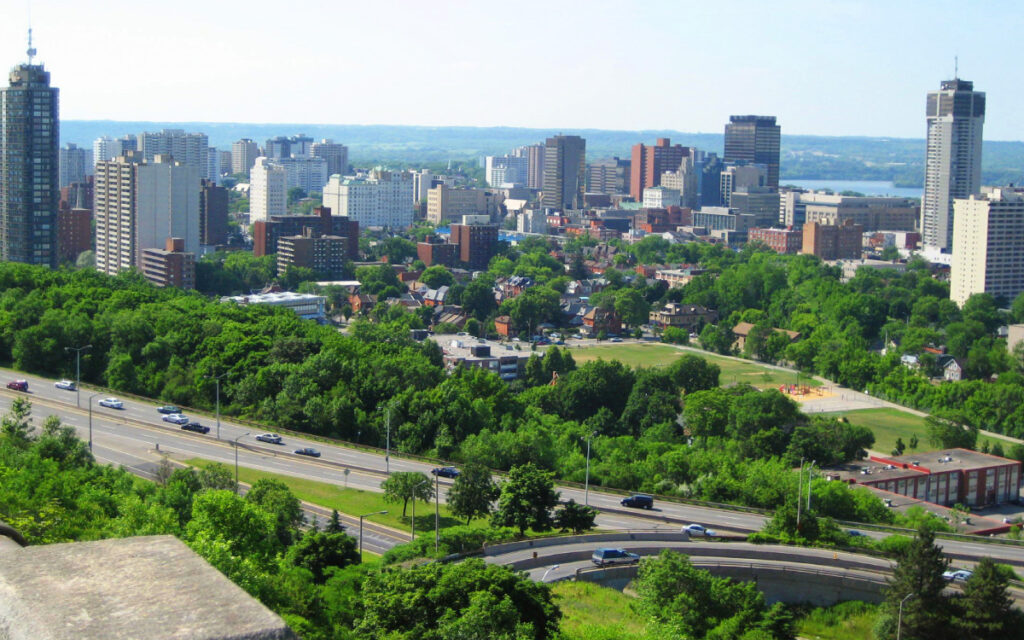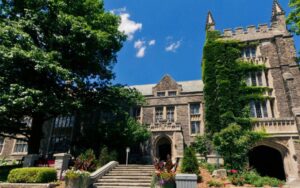
Despite the province’s recent move to reverse its previous approval of the expansion of Hamilton’s urban boundary, multiple groups are still pressuring the city and the province to open the land for new housing. Photo Credit: Wikimedia Commons.
Despite the province’s recent move to reverse its previous approval of the expansion of Hamilton’s urban boundary, multiple groups are still pressuring the city and the province to open the land for new housing.
The Elfrida Community Builders Group (Elfrida Group), made up of local residents, businesspeople, and homebuilders who own land in the Elfrida area of Hamilton, recently wrote a letter to Hamilton City Council through their lawyer advocating for the municipality’s urban boundary to be expanded.
The Elfrida area is located around the Upper Centennial Parkway and Regional Road 20 intersection.
The letter notes that in 2006, nearly 20 years ago, the City of Hamilton identified the Elfrida Lands as the city’s “preferred growth area for needed housing.”
“The Elfrida Lands are contiguous to Hamilton’s built-up area, are along planned higher-order transit corridor, are not in the Greenbelt, and do not contain any significant environmental features,” the document reads.
The Elfrida Group notes that the November 2021 Land Needs Assessment, prepared by the city’s land needs consultant and the city’s chief planner and peer-reviewed by Watson and Associates Economists Ltd., “concluded that an urban boundary expansion of approximately 1,300 hectares was needed to accommodate growth to 2051” in Hamilton.
They add: “Both the chief planner and land needs consultant also concluded that the 1,300 hectare urban boundary expansion was needed in addition to, not as a substitute for the significant intensification targets recommended.”
City staff also expressed in the past that it is “not realistic” to reach intensification levels within Hamilton’s current urban boundary to account for the city’s projected population growth.
However, Hamilton City Council previously voted against expanding Hamilton’s urban boundary, and when the province decided to open 2,200 hectares of undeveloped land for housing it was then reversed after questions surrounding the integrity of the government’s decision-making process.
As such, the Elfrida Group is at an impasse and is still trying to convince the city that, at the very least, 1,300 hectares should be opened for housing.
The group also notes that the city has already spent significant funds to implement the Elfrida Lands growth strategy including $1 million for a Subwatershed Study, a Growth Area Study including a secondary plan and significant consultation, $84.2 million budgeted for the Upper Centennial Parkway Sanitary Trunk Sewer, and $31.2 million budgeted for the Dickenson Trunk Sanitary Sewer.
Overall, the group says that $229 million has been allocated towards various infrastructure projects in the area to support development.
Michael Collins-Williams, Chief Executive Officer of the West End Home Builders’ Association (WE HBA), a group which represents land development, home-building, and renovation professionals, also wrote to council asking for the urban boundary to be expanded despite the province’s reversal.
The group asserts that the “Council-approved Official Plan will fail to even come close to achieving the necessary number of housing units or diversity of housing typologies required to accommodate growth.”
WE HBA says that Hamilton needs to grow “up, in, and out to accommodate its fair share of Ontario’s target of 1.5 million additional homes.”
Collins-Williams also offered a strongly worded assessment of the situation.
“The local interest is not the same as the broader public interest,” said Collins-Williams. “Hamilton Council disregarded Provincial policy and disregarded the recommendations of their own professional planning staff and a peer review of that work due to local political pressure in the lead up to a municipal election cycle.”
“Hamilton City Council knowingly submitted an Official Plan that results in a shortfall of ~60,000 homes in the next 30 years from the Hemson growth forecasts which are already incompatible with the provincial goal of 1.5 million homes,” he continued. “The No Urban Boundary Expansion (NUBE) decision, combined with other policies such as the city-wide 30-storey height limit reflect a hyper-local perspective shaped on local opposition to new housing supply.”

Based in Hamilton, he reaches hundreds of thousands of people monthly on Facebook, Instagram, TikTok, and Twitter. He has been published in The Hamilton Spectator, Stoney Creek News, and Bay Observer. He has also been a segment host with Cable 14 Hamilton. In 2017, he received the Chancellor Full Tuition Scholarship from the University of Ottawa (BA, 2022). He has also received the Governor General’s Academic Medal. He formerly worked in a non-partisan role on Parliament Hill in Ottawa.


















